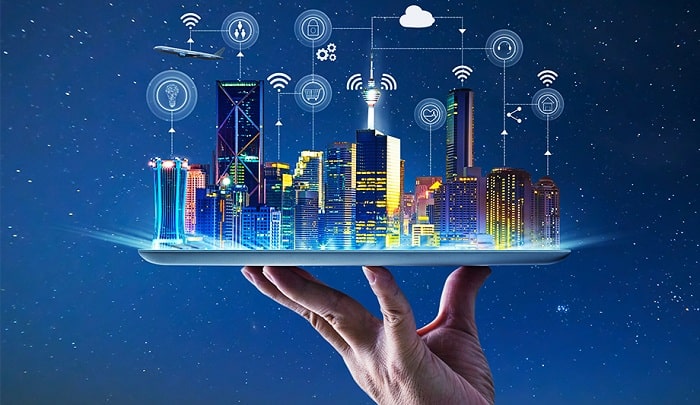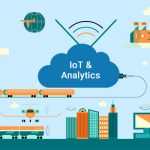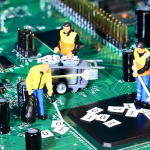
Connected sensors and automation are transforming building operations to slash energy usage and costs. Collectively called smart buildings, these networked infrastructure systems continuously optimize conditions room-by-room while predicting and preventing equipment faults before they occur. Let’s examine some of the key technologies and use cases driving smarter, greener, more resilient facilities.
Optimizing HVAC and Lighting
Heating, ventilation and air conditioning (HVAC) represent the bulk of commercial building energy expenditures. Smart systems trim usage substantially by adjusting locally instead of heating or cooling entire zones wastefully. Low-cost IoT sensors monitor occupancy, temperature, humidity and pollutants in each space. The data feeds to controllers balancing comfort and efficiency across rooms.
For example, US-based startup Encycle developed enteliWEB to boost HVAC runtime by up to 30%. The cloud-based solution analyzes patterns and weather forecasts to develop intelligent setpoint schedules. Encycle’s syllable® EDGE devices then modulate cooling autonomously in real-time to reduce energy waste. Syllable’s small form factor also cuts retrofit costs up to 50% compared to bulky HVAC controllers.
Likewise, smart lighting minimizes electricity and bulb replacements through networked controls. In open office layouts, sensors dim unused sections while keeping lit areas closer to natural brightness. The IoT software Platformatics helps offices configure lighting based on simulated daylight patterns. Such context-aware automation avoids lighting overkill.
Proactive Equipment Maintenance
In addition to optimizing operations, smart buildings enhance reliability through proactive maintenance. Internet of Things (IoT) sensors continuously monitor equipment performance to predict problems before failure. Analytics detect declining efficiency, abnormal vibrations, chemical leaks, frayed parts and more. Staff can then address issues through preventative repairs when convenient rather than reacting to crises.
For instance, gears in elevators and escalators wear over time. Vibration monitoring by German startup Actary senses gearbox deterioration early. Their AI-powered diagnosis and prognosis directs technicians to maintenance tasks just before breakdown. Such predictive approaches slash downtime and costs across essential equipment.
Similarly, water leak monitoring prevents extensive building damage. Flow sensors and flood detectors alert facilities staff to plumbing leaks as they start. Nozomi Networks equips municipal water plants with cybersecure industrial IoT technology to safeguard supply infrastructure. The IoT becomes indispensable for proactively managing civic assets and resources efficiently.
Improving Safety and Security
Smart buildings also utilize connected sensors to protect human lives and property. Gas detectors warn of possible carbon monoxide buildup or fuel leaks before they endanger people. Occupancy sensors guide fire evacuations and help locate survivors. IoT-enabled video surveillance and access controls improve situational awareness while reducing risk.
During emergencies like earthquakes, networked building systems spring into action. Elevators park safely and server racks brace. Networked light poles may even sense seismic vibrations directly. Quake Global’s low-cost accelerometers installed across Los Angeles will provide precious seconds of advance warning when tremors hit. By responding intelligently, connected infrastructure mitigates harm.
At a workplace level, wearables monitor employee biometrics and proximity to hazards. Startup StrongArm Technologies embeds strain sensors into safety vests communicating posture risks in real-time. Managers gain transparency to guide training and interventions that reduce injuries. Smart facilities leverage IoT data to protect and empower occupants.
Practical Paths to Intelligence
While integrating extensive connectivity and analytics may seem daunting initially, smart buildings can start small. Focusing first on a site’s biggest pain points and cost centers provides tangible benefits. For example, simply monitoring walk-in refrigeration units’ temperature, humidity and power consumption provides sufficient data to optimize efficiency. Retrofitting existing equipment with data gateways and dashboard software is straightforward and budget-friendly.
Likewise, choosing flexible solutions allows incremental expansion. Software company Altizon enables customers to first connect key assets like pumps or motors to the cloud for monitoring. Additional sensors are easy to add into Altizon’s drag-and-drop visualization dashboard later as needed. Such progressive adoption nurtures capabilities in-house over time.
Though complex, smart infrastructure promises invaluable efficiency, reliability and safety benefits. IoT integrators must balance holistic data insights with pragmatic starting points tailored to each customer’s journey. With thoughtful vision and partnerships, smart buildings become powerful cogs of progress rather than disruptive renovations.
















